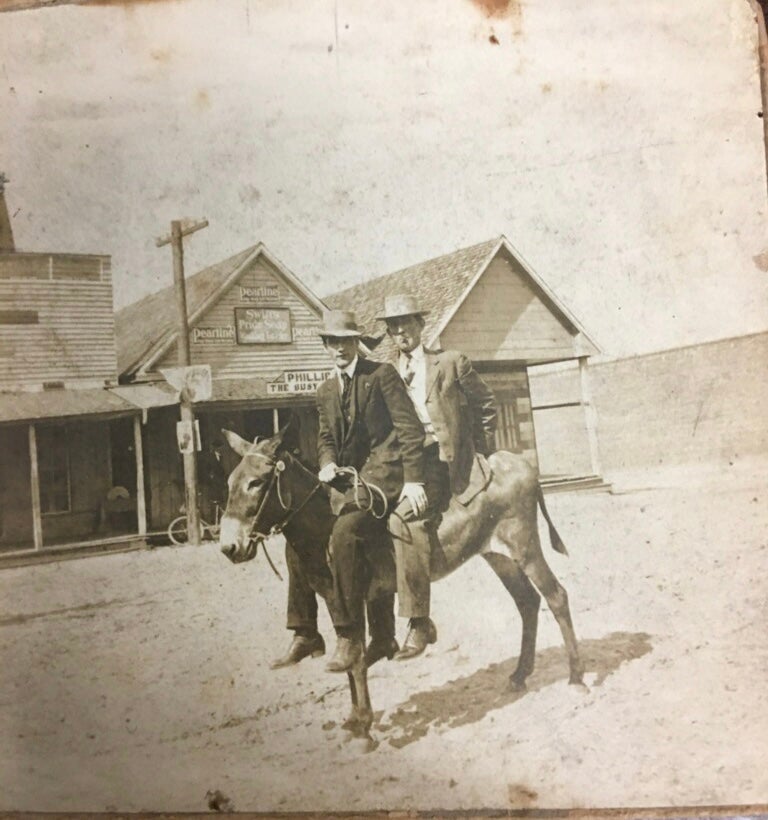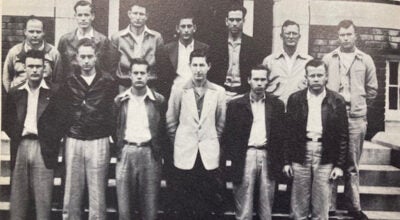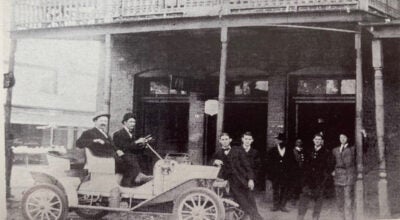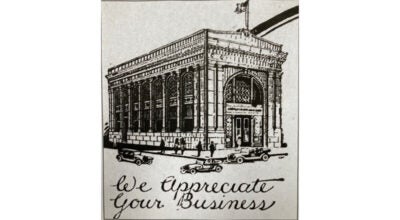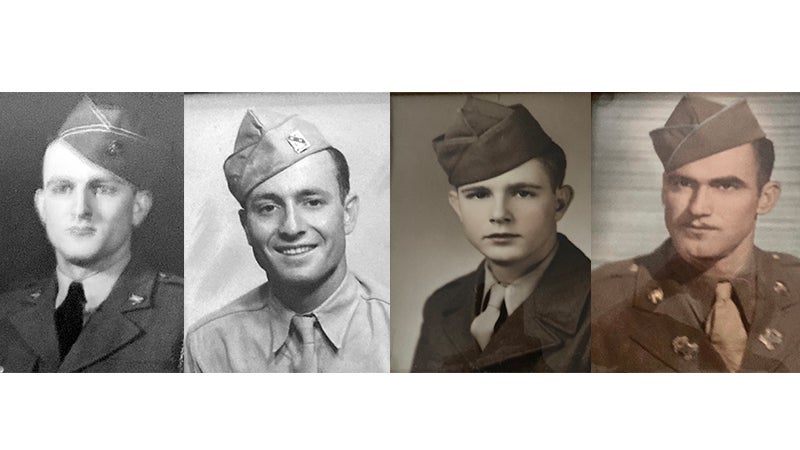REMEMBER WHEN: Mule Power in Andy
Published 10:34 am Monday, November 2, 2020
|
Getting your Trinity Audio player ready...
|
The days of the mule teams and the mule and wagon are gone. The younger generation today has no idea of how valuable a good mule was to have back then. I have been told that what was referred to as a “one-mule farm” would be a farm of 40 acres. Correct me if I am wrong, farmers. I am only a city girl!
Back in the early 1900s, the sons of M. E. Brunson of the City Hotel, the “Brunson boys,” used to have a family mule they called “One-eyed Jack.” That mule hitched to a wagon would make daily runs with Johnny Crenshaw to the River Falls Commissary situated at the grounds of the Horse Shoe Lumber Company delivering freshly baked bread from the Brunson Bakery. That mule knew the way by heart. The mule also would regularly go with all the boys and Johnny to the family 40-acre farm down on Carlton Street where strenuous work would go on starting about 4:30 in the mornings – hoeing weeds in the sweet potato and vegetable gardens, feeding the pigs, milking the cows – all before walking back to the hotel on South Cotton Street for breakfast and then heading to the East Three Notch School hoping to arrive by 8:00 a. m. Their friend Johnny Crenshaw was just one of them and was always around during work and play. That ornery mule once threw Johnny and kicked him in the head. Mama Brunson immediately put him to bed in the hotel and took care of him until he recovered.
There are a good many mentions of mules in The Andalusia Times, 1906 editions. The River Falls reporter wrote in June, 1906, “The Horse Shoe Lumber Co. recently bought a fine lot of mules and will use them in hauling logs. In different sections, mules are being substituted for the patient ox in the logging business, and it is said that the change is proving satisfactory even over in Mississippi.”
Several downtown businesses ran ads in the newspaper. W. L. McGowin, “the horse trader,” advertised “Kentucky Horses & Mules.” O’Neal, Law, & Co. ran large weekly ads such as, “Have on Hand Mules and Horses for Farm & Turpentine Purposes, Well Broke Harness and Saddle Horses to Select From, A Fine Line of Buggies and Wagons, It is to your interest to see our stock.” J. W. Shreve offered, “Mules, Horses, Wagons, Buggies, and Harness – Have just received a (RR) car load of fine Tennessee mules ranging in weight from 700 to 1,350 lbs. and as smooth and sleek as you ever saw. I guarantee to treat you right.” T. E. Henderson & Co.’s advertisement promoted, “High Class Mules, Horses, Wagons, Buggies, and Harness.” These businesses were like the car dealerships of today!
March 21, 1906 – “W. C. W. Cawthon had the misfortune to lose his large and commodious barn by fire on Sunday night last. The fire gong sounded between 10 and 11 o’clock, and in a few minutes a large crowd had gathered on the premises, but they could render no assistance as fire was not discovered until the top of the building was about ready to fall in. In a short while, the structure was reduced to a heap of ashes. A fine family horse for which the owner had refused an offer of $250. the day before was burned to death together with a cow and a calf while three fine large mules narrowly escaped a similar fate but were finally gotten out alive but badly injured. As the barn stood only a short distance from Mr. Cawthon’s residence, it would undoubtedly have shared a similar fate but for a strong breeze which blew in the opposite direction. Mr. Cawthon bought three fine mules right away to replace those so badly injured in the fire. ”
March 21, 1906 – “The flooring of the River Falls bridge needs repairing. If the county commissioners don’t look out, they may have a suit for damages on their hands. We are informed that several horses and mules narrowly escaped
breaking their legs by stepping into these dangerous holes.”
May 30, 1906 – “The repairs on River Falls bridge have been completed, and the public can now cross in perfect safety. Charles Beck did the work.”
April 4, 1906 – “Henry Lundy lost a valuable mule in a peculiar manner while on his way home from Andalusia Saturday evening last. He was driving a spike team when the mule in front made a dash runaway, breaking the wagon tongue, the sharp end of which pierced the side of the lead mule almost completely disemboweling it, and causing death in about 30 minutes.”
October 3, 1906 – “Say – Is your mule afraid of these new boisterous automobiles?”
July 4, 1906 – “An automobile passed through here last Saturday enroute to Andalusia. It was quite a show to our people who saw one for the first time.”
July 18, 1906 – “The nice thing about an old horse and rig is the way they don’t break down on pleasant days like automobiles!”
October 24, 1906 – “The auto is a ‘jonah’ to the people who drive to town and have to meet them on the streets. Only last week, the mule of a prominent farmer became frightened at an auto and did considerable damage to the buggy and harness annexed to his anatomy. The mule was a necessity, the auto was not, and the result is that several dollars will have to be expended by this mule-driving and hard-working farmer at the expense of a gasoline burning nuisance of the highway that is all together indispensable in this section. The poor we have with us always, but the auto is an innovation in these parts, and none but the rich and well-to-do can sport them, doncherknow?”
November 14, 1906 – “Mrs. Tadlock and Mrs. Jones went to Andalusia on the 1 o’clock train the other day expecting to return at 3 o’clock but got left. It is said that their little ones who were left at home were exercising their lungs quite lustily when their mothers finally came home. (They were not singing.) Mr. Spicer of Heath happened to be in Andalusia in his buggy, and he loaned the ladies his mule and buggy and came on a wagon himself. We suppose that was a buggy ride much appreciated.”
December 5, 1906 – “The automobiles were in evidence Sunday afternoon. Andalusia (now) has as many automobiles according to population as any town in the State!”
Now readers, I admit that growing up, all I knew or ever heard about mules consisted of two things – 1 – the song we sang every Friday afternoon in the school assembly at the East Three Notch auditorium. “I’ve got an old mule and his name is Sal, Fifteen years on the Erie Canal. He’s a good old worker and a good old pal. Fifteen years on the Erie Canal…” 2 – the story I heard about the unruly boy in Sunday School in the 1950s at the First Baptist Church who told his teacher, “Mrs. __________, When you pray and say “Oh, Lord,” your mouth looks just like the south end of a north bound mule!”
Yes, it is fun to Remember When! Keep those cards and letters coming!
Sue Bass Wilson, AHS Class of 1965, is a local real estate broker and long-time member of the Covington Historical Society. She can be reached at suebwilson47@gmail.com.


